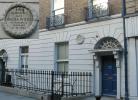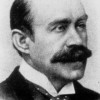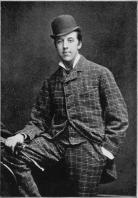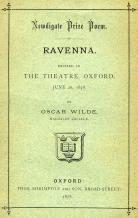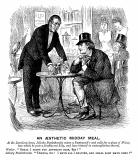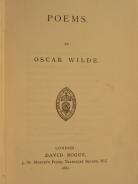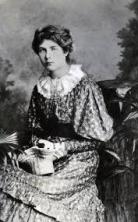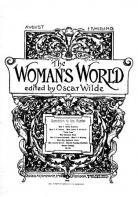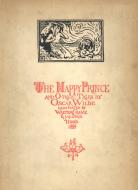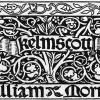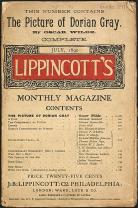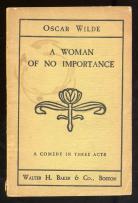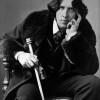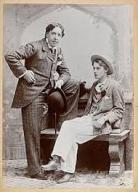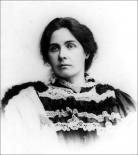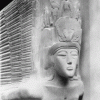Oscar Wilde
Created by Kenneth Daley on Fri, 01/08/2021 - 12:00
Timeline of events in Wilde's life
Timeline
Chronological table
| Date | Event | Created by | Associated Places | |
|---|---|---|---|---|
| 16 Oct 1854 |
Wilde's BirthOscar Finegal O'Flahertie Wills Wilde was born on 16 October 1854 at 21 Westland Row, Dublin |
Kenneth Daley | ||
| circa. 1856 |
Oscar Wilde Baptised at St. Mark's Church, DublinWilde was baptised at St. Mark's church, with the records later being moved to the nearby St. Ann's church. His mother was not necessarily a Catholic herself, but nonetheless felt that her boys should be baptised into the church. Wilde's relationship with religion was off and on: during his time at Oxford, he considered becoming a Catholic priest, but obviously didn't go through with it. In 1877, he reports a meeting with Pope Pius IX that thoroughly impressed him. Perhaps most vitally, just before his death, he saw a Catholic priest and requested to be recieved into the church. His feelings about the Catholic church are especially interesting considering his sexuality, which would have been demonized by that same religion. |
Sean Murphy | ||
| Feb 1864 |
Wilde Enrolls at Portora Royal School at EnniskillenWilde would attend the school in Ireland until 1871 (age nine to around age sixteen or seventeen) and was awarded for being one of its top students of classics consecutively in his final two years of attendance. When he signed the Roll Book for the school, he neglected the "Wills" part of his name and spelled "O'Flaherite" incorrectly, perhaps because the name came from a line of notorious Galwegian kings. He would be given the name "Grey Cow" in his time there, as he had given nearly every boy at school there a nickname, through his own he didn't enjoy. Richard Ellmann writes that the name was "perhaps premonitory of Doria[n] [Grey's] surname." Other notable alumni of the institution include novelist Samuel Beckett and Anglican clergyman Henry Francis Lyte. Sources: https://www.biography.com/writer/oscar-wilde https://worldhistoryproject.org/1864/oscar-wilde-attends-the-portora-roy... Oscar Wilde by Richard Ellmann. |
Alexander Schmelter | ||
| Autumn 1871 to Spring 1874 |
Wilde attends Trinity College in DublinIn 1871, Oscar Wilde was awarded the Royal School Scholarship allowing him to begin his studies at Trinity College in Dublin, Ireland after graduating from Portora Royal School. While not notably active in the social scene or clubs at the school, Wilde did contribute to the The Journal of Hellenic Studies, that being a peer-reviewed academic journal covering research done on ancient Greek culture. Here Wilde befriended John Pentland Mahaffy, Trinity College's leading Greek scholar. Mahaffey would prove to be where Wilde gained his interest in "The Greek ideal". "The Greek Ideal" being defined by The Oxford Dictionary of Sports Science & Medicine as: "A philosophical ideal of ancient Greeks who believed that each person should have a harmonious blend (sometimes called balance) of physical, mental, and spiritual aspects." Much like Wilde, Mahaffy proved himself an accomplished writer, pushing works such as Rambles and Studies in Greece (1876), Social Life of Greece from Homer to Menander (1874; 3rd edn. 1877), and Descartes (1880).
After three years of study, Wilde would then transfer to Oxford University on a scholarship in 1874. Sources: http://www.victorianweb.org/authors/wilde/wildebio.html#2 https://poets.org/poet/oscar-wilde http://www.ricorso.net/rx/az-data/authors/m/Mahaffy_JP/life.htm https://www.oed.com/view/Entry/85660?redirectedFrom=Hellenistic#eid |
Aidan Diefenbach | ||
| Feb 1873 |
Studies in the History of the Renaissance
ArticlesRachel Teukolsky, “Walter Pater’s Renaissance (1873) and the British Aesthetic Movement” |
David Rettenmaier | ||
| 1874 |
Wilde Graduates Trinity & Is AwardedWhile attending Trinity College, Wilde impressed his professors and his peers with his talent. Upon his graduation, he won many awards which included most notably the Berkley Gold Medal for Greek. He was also granted the Demyship scholarship to continue his studies at Magdalen College in Oxford. |
Aurora Hattendorf | ||
| 17 Autumn 1874 |
Wilde attends Oxford to study classicsOscar Wilde arrives at Magdalen College, Oxford. After achieving fame and notoriety, Wilde said “the two great turning-points in my life were when my father sent me to Oxford, and when society sent me to prison.” He chose to study classics, describing it as the only subject “where one can be, simultaneously, brilliant and unreasonable.” Having spent 3 years studying the same subject in Dublin at Trinity College Dublin, he is already well-read and interested in the topic. He quickly became a social butterfly. When asked his age, he would sometimes reduce the number by as much as four years to appear more prodigious. Lying about his age or obscuring his previous university experience helped to emphasize how learned he was and impress classmates. During this time, Wilde had a lecturer named John Ruskin. Ruskin had strong beliefs that if labor and artistry were combined and everyone contributed, beauty would result and there wouldn’t be such an extreme hierarchy of labor in society. Wilde recounted that what he learned from Ruskin was “that in all labour there is something noble. Ruskin recruited Wilde and other undergraduates to undertake a project to connect two separated rural towns with a beautiful and functional road. The group gathered every morning for the duration of the term to create the road, but the project was never finished. Wilde used this experience as inspiration to create a new artistic movement. In his final year at Magdalen College, Wilde met Walter Pater. Wilde sent Pater an article he had published and explained that he was a fan of The Renaissance. Pater and Wilde occasionally spent time together over tea, and their casual friendship had a large influence on Wilde going forward, as he echoed Pater’s ideas with witty prose. Upon graduation from Magdalen College, Wilde received a “double first,” which is given to students who achieve First Class Honors in two areas of study. He graduated in 1878. |
Abby Nelson | ||
| 1877 |
Wilde Meets with Pope Pius IXWhile studying at Trinity College in Dublin, Wilde developed an interest in Roman Catholicism. In a letter to Wilde's father, George MacMillan (Wilde’s friend and traveling companion) noted that Wilde viewed Roman Catholicism as "the highest and the most sentimental" of religions. Wilde's tutor disapproved of this fascination, and attempted to bring his focus to Greece. Wilde was not deterred and this interest just increased when he went to Oxford, where he began to contemplate conversion. Through his friend David Hunter-Blair, he got an audience with Pope Pius IX in 1877. During this meeting, it is said that Pope Pius IX said to Wilde, “I hope that you may take a journey in life in order to arrive at the city of God”. It is noted that the encounter had a big impact on Wilde and left him speechless. He was angry that his father had refused to let him convert as a child and reportedly said, “Catholicism is the only religion to die in”. At this meeting, Wilde did not convert as he had discussed with clergy. He tried again to convert in 1878, but decided against it because his father threatened to financially disown him. Wilde ended up joining the Catholic Church shortly before his death. Source: Alvarez, Inma. “The Catholicism of Oscar Wilde.” Aleteia, 6 Oct. 2016, aleteia.org/2016/10/06/the-catholicism-of-oscar-wilde/. Ellmann, Richard. Oscar Wilde. New York: Vintage Books, 1988. Malik, Shushma. “All Roads Lead to Rome?: Decadence, Paganism, Catholicism and the Later Life of Oscar Wilde.” Cahiers victoriens & édouardiens 80 Automne (2014): 2–. Web. Ross, Iain. “Oscar Wilde in Greece: Topography and the Hellenist Imagination.” International Journal of the Classical Tradition, vol. 16, no. 2, 2009, pp. 176–196. JSTOR, www.jstor.org/stable/40388893. Accessed 6 Apr. 2021. |
Kallie Dahlman | ||
| 1878 |
Oscar Wilde is Awarded the Newdigate PrizeIn 1878, his last year at the University of Oxford, Wilde received the Newdigate Prize for Poetry for his sixteen page poem "Ravenna," about a young man's journey to the titular Italian city. The poem was first printed in June of the same year. The Newdigate Prize, awarded to Oxford students for the Best Composition in English verse, was established in 1806 in memorial of English politician Sir Roger Newdigate. When accepting the prize, Wilde recited the poem in public. The prestige of the award helped Wilde gain notoriety outside of the university. Source: https://worldhistoryproject.org/1878/oscar-wilde-is-awarded-the-newdigat... |
Emily Bremnre | ||
| 17 Jul 1880 |
"An Aesthetic Midday Meal" is published in Punch MagazineCartoonist George du Maurier draws "An Aesthetic Midday Meal" for Punch Magazine, a British magazine of humor and satire. This cartoon satirizes Oscar Wilde's lifestyle, as the unconventional customer, Jellaby Postlethwaite, is seen sitting in a feminine manner with his legs crossed and hands clasped. Sources George du Maurier, "An Aesthetic Midday Meal" Snider, Rose. “Oscar Wilde's Progress down East.” The New England Quarterly, vol. 13, no. 1, 1940, pp. 7–23. JSTOR, www.jstor.org/stable/360678. |
Janey Schmidt | ||
| Jun 1881 |
Wilde Publishes "Poems"When Oscar Wilde was twenty-six years old, he reached out to publisher David Bogue, eager to publish a volume of poems. There is little information about David Bogue or what else he had published, but his father was also a publisher and bookseller who traded as “Tilt and Bogue”. Wilde had previously published “A Chorus of Cloud Maidens” in the Dublin University Magazine in 1875, “The Rose of Love” in Kottabos in 1876, and “Ravenna” in 1878. A total of sixty-two of Wilde's poems were chosen to be printed and published under the straightforward title of "Poems". It is unclear who chose which poems went into “Poems”, but it is likely that Wilde played a large part in the decision. It was advertised the following month on The Athenaeum, which was a journal that focused on art, science, and literature. The Athenaeum ran from 1828 to 1921, when it merged with another journal, The Nation. Some of the poems included in Wilde’s “Poems” had already been in print, but others were new or revised poems, such as 'Magdalen Walks'. Wilde's poems originally received reviews that criticized him for being too aesthetic or unoriginal. Most of the positive reviews came from his brother or Oscar Browning, who was recruited specifically for the job because Wilde wanted someone intellectual who would really criticize him. Oscar Browning was a writer, historian, and educational reformer who helped found the Cambridge University Day Training College. There were seven hundred fifty copies of “Poems” printed, but they were released in three sections of 250. Each section was called a new edition, but the only real change was new binding. Sources: “David Bogue.” Artist | Royal Academy of Arts, www.royalacademy.org.uk/art-artists/name/david-bogue-1. “The First Edition of Oscar Wilde's Poems (1881).” Magdalen College Oxford, 30 Nov. 2014, www.magd.ox.ac.uk/libraries-and-archives/illuminating-magdalen/news/first-edition-of-wildes-poems/. “The Online Books Page.” The Athenaeum Archives, onlinebooks.library.upenn.edu/webbin/serial?id=athenaeum. “Poems : Wilde, Oscar, 1854-1900.” Internet Archive, Boston Robert Bros, 1 Jan. 1881, archive.org/details/poemsosc00wilduoft/page/n5/mode/2up?ref=ol&view=theater. Sticky Facts Editorial Staff. “Oscar Browning - Facts, Bio, Favorites, Info, Family.” Sticky Facts, 4 July 2018, thestickyfacts.com/oscar-browning-facts/. |
Kallie Dahlman | ||
| 1882 |
Oscar Wilde Lecture Tour: BostonAt 27-years-old, Wilde agreed to a year-long lecture tour throughout the United States. It was proposed to him as a publicity strategy for Gilbert and Sullivan’s satirical comic opera named Patience. His friend, George Grossmith, was an actor of the company, which is how he gained the opportunity. Grossmith played the main character––a poet dedicated to sensuous beauty, thus Wilde was the perfect poster boy. Wilde’s skill for publicity assisted the company; however, his true motive was to grow strong roots for the aesthetic movement and himself in the States. His controversial, feminine fashion and hair in photos gained him notoriety across the United States, including negative criticism. For example, sixty Harvard students dressed in caricatures of Wilde while sitting front-row at a Boston lecture. In contrast to this small incident, Boston is considered the most prominent American city for the aesthetic movement. A group called the Visionists, consisting of prominent artists and writers in Boston, aligned with Wilde and worked to spread the ideologies of aestheticism. His aesthetic lectures in Boston led him to be known for the quote: “The supreme object of life is to live. Few people live. It is true life only to realize one’s own perfection, to make one’s every dream a reality. Even this is possible.” By the time the lecture tour was over, he was an international celebrity. Articles FRIGO, NICK. “Posing and Posters: Oscar Wilde in America - 1882.” The Wildean, no. 30, 2007, pp. 73–85. JSTOR, www.jstor.org/stable/45269065. Morgan, Benjamin. “Oscar Wilde's Un-American Tour: Aestheticism, Mormonism, and Transnational Resonance.” American Literary History, vol. 26, no. 4, 2014, pp. 664–692., www.jstor.org/stable/43818715. “Oscar Wilde.” Broadview Anthology of British Literature, third ed., B, Broadview Press, Peterborough, Ontario, 2019, pp. 1157–1159. “Oscar Wilde Stirs Up Boston.” New England Historical Society, 18 Aug. 2019, www.newenglandhistoricalsociety.com/oscar-wilde-stirs-up-boston/.
|
Brooke Eubanks | ||
| 29 May 1884 |
Wilde Marries Constance LloydOscar Wilde and Constance Lloyd are wed in St. James' Church Paddington. They were married for four years and had two children: Cyril and Vyvyan. Constance was interested in women's rights and was an accomplished writer of her own, which Wilde was supportive of.
Sources: https://www.britannica.com/biography/Oscar-Wilde https://www.theguardian.com/books/2011/jun/24/constance-mrs-wilde-franny...)%20was%20fully%20returned.&text=A%20proud%20new%20father%2C%20he,male%20friends%20to%20get%20married. |
Alexander Schmelter | ||
| 29 May 1884 |
Wilde Marries Constance LloydWilde met Lloyd in 1881, and they married on May 29, 1884 at St. James Church in Paddington. Constance Lloyd was wealthy, intelligent, and forward-thinking, and was a liberal author like her husband. They had 2 children together, named Cyril and Vyvyan. Both Oscar and Constance found independence within their marriage, as they were each allowed different ideas and devotions, and Constance chose to focus on womens' rights. She was eventually forced to flee the area with her children and change their last names to Holland, after Oscar Wilde was convicted of gross indecency in 1895. Constance died at the young age of 39 in 1898. Sources: https://worldhistoryproject.org/1884/5/29/oscar-wilde-marries-constance-... https://go-gale-com.colum.idm.oclc.org/ps/i.do?p=LitRC&u=uiuc_columbia&i... (Margaret Sullivan's summary of Franny Moyle's piece, 'The Tragic and Scandalous Life of Mrs. Oscar Wilde') |
Kailan Carter | ||
| 14 Aug 1885 |
Criminal Law Amendment Act
Related ArticlesMary Jean Corbett, “On Crawford v. Crawford and Dilke, 1886″ Andrew Elfenbein, “On the Trials of Oscar Wilde: Myths and Realities” |
David Rettenmaier | ||
| 1887 |
Wilde Reviews Pater's "Imaginary Portraits"Wilde began to adopt more of Pater's aesthetic views in his own writing towards the late 1880's, with a few key differences. Pater's thoughts on aesthetics are transformed with wit in the preface to Dorian Gray: "It is the spectator, and not life, that art really mirrors" (3). Pater's ruminations on art and its subject can be seen as an influece, only Wilde presents this dense notion through witty and succint prose.
At this same time, Wilde wrote highly complimentary reviews of Pater's newly published works, including "Imaginary Portraits" (1887) and "Appreciations With An Essay on Style" (1889). In his review entitled "Mr. Pater's Imaginary Portraits," Wilde concludes that "On the whole, then, this is a singularly attractive book. Mr. Pater is an intellectual impressionist." Pater incorporates the use of many forms, including scholarly essay, brief life, short story, allegory, lyrical ekphrasis, historical vignette, myth, and diary, to create imaginative written pictures, solidifying a relationship between life and art. "Each portrait typically focuses on an individual who is deeply solitary, an enigma to the world around him, yet inhabits a historical moment in which his peculiar desires become harbingers of epochal cultural transition." Three years later, Wilde would publish The Picture of Dorian Gray in Lippincott's Magazine, which echos greatly the idea of a portrait solidying the relationship between life and art.
https://victorianweb.org/authors/wilde/essays/5.html https://victorianweb.org/authors/pater/hext2.html http://www.gutenberg.org/files/4038/4038-h/4038-h.htm http://www.gutenberg.org/files/4037/4037-h/4037-h.htm Wilde, Oscar, and Joseph Bristow. “The Picture of Dorian Gray.” The Picture of Dorian Gray, Oxford University Press, 2006, p. 3. |
Bridget Kingston | ||
| 1887 to 1889 |
Wilde Appointed Editor of The Lady's WorldIn 1887, Oscar Wilde was appointed editor of The Lady's World, a Victorian women's magazine published by Cassell and Co. from 1886-1890. Prior to Wilde's employment, the magazine concentrated in women's fashion trends among high soceity, however, during his time as editor, he began to shift the magazine towards more serious content on parenting, politics, and arts while also incorporating pieces of fiction. Under his influence, the magazine's name was changed from The Lady's World to The Woman's World in an attempt to appeal to more educated women. Under his direction, he claimed the magazine would "take a wider range, as well as a high standpoint, and deal not merely with what women wear, but with what they think, and what they feel" (The Complete Letters, 297). He also used his status as a well-known writer to solicit contributions from distinguished writers and figures such as Elisabeth of Weid (the Queen of Romania), novelist Marie Corelli, Charles Ricketts, and Princess Helena. By 1889, Wilde tired of his role as editor and slowly stopped attending meetings or replying to publishers. As a result, he was dropped from the staff, but the magazine was unable to continue without him, and by 1890, the magazine had ended its publication.
Sources: Wilde, Oscar, The Complete Letters of Oscar Wilde. Eds. Holland, Merlin and Rupert Hart-Davis. London: Fourth Estate, 2000. https://worldhistoryproject.org/1887/oscar-wilde-is-appointed-editor-of-... http://www.victorianweb.org/authors/wilde/fitzsimons.html https://wildedecadents.wordpress.com/2012/11/21/oscar-wilde-and-the-woma... |
Emily Bremnre | ||
| Spring 1888 |
Oscar Wilde publishes children's book collection "The Happy Prince and Other Tales.Oscar Wilde, known most notably for titles such as The Picture of Dorian Grey and The Canterville Ghost, was also a successful children's book author whose work includes short story collection The Happy Prince and Other Tales. The Happy Prince and Other Tales was first published in May of 1888 by Alfred Nutt. Notable illustrations within the book including the cover, The Selifsh Giant, and The Remarkable Rocket were created by artist and illustrator Walter Crane. The book includes titles The Happy Prince, The Nightingale and the Rose, The Selfish Giant, The Devoted Friend, and The Remarkable Rocket. Librivox.org describes the stories as being "sometimes sweet and uplifting, sometimes caustic and pointed." In a literary analysis published by the International Journal of Arts and Sciences, authors Nino Kirvalidze and Nino Samnidze describe the children's stories as "a cycle of thematically interconnected texts, where imagination/fantasy merges into reality thus aesthetically depicting the bipolar morality of the late 19-th century English society with its virtues and vices." Image credit and access to the stories comes from gutenberg.org https://librivox.org/the-happy-prince-and-other-tales-by-oscar-wilde-2/ |
Kira Berkoff | ||
| 15 Nov 1888 |
"Letterpress Printing" lecture
|
David Rettenmaier | ||
| 1889 |
Cleveland Street ScandalThe Cleveland Street Scandal started in 1889, when police discovered a homosexual male brothel on Cleveland Street in London's West Side, made up of largely underage, lower-class male sex workers. The government was accused of covering up the names of aristocrats and other prominent figures that frequented the brothel. The rumors went as high up as Prince Albert Victor, the eldest son of the Prince of Wales and second in-line to the throne. This was never directly proven , but has remained a conspiracy. Lord Arthur Somerset, a major in the Royal Horse Guards and equerry to the Prince of Wales, was also named. He fled to Hamburg, Germany before charges could be brought against him. It's important to note that sexual acts between men were illegal at this time in Britain. Oscar Wilde was accused of being tied up in this scandal, but no evidence or proof suggests he partook. One figure that is relevant to the novel did, however. Lord Ronald Gower was well known in the homosexual community at the time, and was publicly implicated in the Cleveland Street Scandal. Gower was a close friend of Wilde's and is portrayed in The Picture Dorian Gray through the character of Lord Henry Wotton. Although this scandal did not directly involve Wilde, it did largely influence the conversation surrounding male homosexuality at the time. The scandal was still fresh in the minds of readers by the time The Picture of Dorian Gray was published just one year later, further fueling the idea that male homosexuality was an aristocratic vice that corrupted young, lower-class boys. Sources: Oscar Wilde, The Picture of Dorian Gray, ed. Joseph Bristow (Oxford: Oxford University Press, 2006). “The London Scandals .” The Press, 9 Dec. 1889, p. 6, paperspast.natlib.govt.nz/newspapers/CHP18891209.2.40.2. “The West End Scandal .” Evening News , 14 Jan. 1890, p. 4, trove.nla.gov.au/newspaper/article/108795706?browse=ndp%3Abrowse%2Ftitle%2FE%2Ftitle%2F508%2F1890%2F01%2F14%2Fpage%2F11932216%2Farticle%2F108795706. Kaczorowski, Craig. “Cleveland Street Scandal .” Glbtq, 2015, www.glbtqarchive.com/ssh/cleveland_street_scandal_S.pdf. |
Bridget Kingston | ||
| Jul 1890 |
"The Picture of Dorian Gray" is first published in Lippincott's Monthly MagazineThe Picture of Dorian Gray, Wilde's seminal work, is first published in its entirety in Lippincott's Monthly Magazine. After a dinner meeting with Lippincott's managing editor J.M. Stoddart and Sherlock Holmes author Arthur Conan Doyle on August 30th, 1889, Wilde was commisioned to write a story for the publication. Wilde submitted a story "The Fisherman and his Soul," but was initially rejected by Lippincott's in favor of a longer story. This motivated Wilde to begin work on The Picture of Dorian Gray for the Philadelphia based magazine. A revised version of the book (more familiar to modern audeinces) would later be published, though this was the first instance of Wilde's story appearing in public. This initial publication omitted 500 words, which scholars agree was intentionally done to eradicate any homosexual content the book originally had. These omitted 500 words have been subject to intense examination by scholars since the story's publication, due to the historical significance of their content. https://www.bl.uk/collection-items/the-picture-of-dorian-gray-as-first-p... |
Jake Klingensmith | ||
| Summer 1891 |
Oscar Wilde and Alfred 'Bosie' Douglas meetLord Alfred Douglas was a young aristocrat and poet. His cousin lent him a copy of The Picture of Dorian Gray and Bosie insisted on being introduced to the author after reading it. Bosie, who got that nickname because he was his mother's favorite child and called him Bosie (a derivative of "boysie") was infatuated with the book and told Wilde that he had read it fourteen times in a row. Soon after, they became lovers and where only parted when Wilde was arrested four years later. Wilde was even introduced to Bosie's mother, Lady Bracknell, and he made her a character in his most popular comedy, The Importance of Being Earnest. Ultimately, Bosie is said to have played a major involvement in the arrest of Wilde because of his erratic behavior and habits that influenced Oscar. Wilde was on trial three times, and Bosie testified for one of them, and then was out of the country for the other two. Bosie's father, John Sholto Douglas drove Wilde to take legal action after Douglas's behavior. After learning of their relationship, John Douglas would visit Wilde's home in fits of rage, attempted to disrupt a performance of Wilde's Importance of Being Earnest, and would leave cards for Wilde stating "for Oscar Wilde / posing Somdomite".https://www.branchcollective.org/?ps_articles=andrew-elfenbein-on-the-trials-of-oscar-wilde-myths-and-realities |
Alyssa Shuster | ||
| 20 Feb 1892 |
Lady Windermere's Fan PremieresOn Saturday, February 20, 1892 Wilde's play Lady Windermere's Fan premiered in London at the St. James Theatre.Lady Windermere's Fan follows the life of a high society wife (Lady Windermere) who suspects her husband is unfaithful. She devises a plot to catch him in his infidelity, invites his mistress to a birthday party, and finds herself in a tenuous half-friendship with the woman before it's revealed she is (spoiler alert) Windermere's own mother. The play was well received by audiences. This came at a stark contrast to his first two plays, Vera, or The Nihilists and Duchess of Padua, which were marked failures that Wilde acknowledged as such. Wilde's Lady Windermere's Fan earned a triumphant review from the St. James Gazette, who wrote, "the play, it need hardly be stated, has been superbly mounted, every detail being cared for with praiseworthy taste and liberality". Source: -St. James Gazette February 22, 1892 (attached image) -Wilde, Oscar., and T. R Henn. Wilde Complete Plays. London: A&C Black, 2009. Print. |
Snag Flynn | ||
| Feb 1893 |
Salome is PublishedSalome was already in rehearsals for a 1892 London premiere, but was banned by the Lord Chamberlain's Office for its portrayal of BIblical figures on stage (these laws would not change for 40 more years). In 1893, however, the play was published in its original French. In regards to this language choice, Wilde is quoted as having said to an interviewer with the Pall Mall Gazette in 1892, "My idea of writing the play was simply this: I have one instrument that I know I can command, and that is the English language. There was another instrument to which I had listened all my life, and I wanted once to touch this new instrument to see whether I could make any beautiful thing out of it". Salome follows the step-daughter of King Herod (named Salome, if you couldn't guess) after she requests the head of John the Bapitist on a silver platter. The main focus of the play was a dance, performed by the actress who played Salome, in which they would dance with seven silk scarves. The sexuality of Wilde's version of Salome's dance differs greatly from that mentioned in the New Testament. An illustrated English translation of the play would be released in 1894, but Salome would remain illegal to produce in England until 1931. Aubrey Beardsley, a prominent aestheticist, did the illustrations for the 1894 edition. Beardsley's work in the Art Nouveau movement had made him a similarly controversial subject to Wilde, as his drawings were largely very graphic erotica. Sources: -Peter Raby, Introduction, p. xiii The Importance of Being Earnest and Other Plays, Oxford, Worlds Classics, 2008 ISBN 978-0-19-953597-2 -“The Censure and Salomé: An Interview with Mr Oscar Wilde,” Pall Mall Budget, 30 June 1892, p. 947. -“Beardsley, Aubrey Vincent (1872–1898), Illustrator.” Oxford Dictionary of National Biography, www.oxforddnb.com/view/10.1093/ref:odnb/9780198614128.001.0001/odnb-9780.... |
Snag Flynn | ||
| 19 Apr 1893 |
"A Woman of No Importance" is First PerformedOscar's satire of gender roles in upper-class society is first performed at London's Haymarket Theatre. It wasn't the first of a few of Wilde's plays produced by or workshopped with the theatre's manager, Herbert Beerbhom Tree. It tells the story of the bachelor Lord Illingworth and his illegitimate son, Gerald, who must choose between his parents for his future. Critic William Archer remarked after its release that Wilde's playwriting "must be taken on the very highest plane of modern English drama." It was wildly successful, bringing in £100 a week to Wilde, and the reviews had some major detractors like Henry James, but many were also quite positive. The play was then published the following year, but the tour was cancelled after a mere four months once Wilde was arrested for sodomy.
Sources: https://www.britannica.com/biography/Oscar-Wilde#ref181105 https://www.bl.uk/works/a-woman-of-no-importance# Richard Ellmann's Oscar Wilde. |
Alexander Schmelter | ||
| 14 Feb 1895 to 8 May 1895 |
"The Importance of Being Earnest" debuts on Valentine's Day 1895"The Importance of Being Earnest" is first performed on Valentine's Day at St. James' Theater in London. This is Wilde's fourth West End hit in the short span of three years. After Wilde is arrested in April for gross indecency, actor-manager George Alexander removes Wilde's name from all advertising and programs in the hopes of saving the shows. This tactic was unsuccessful and the box office collapsed, closing the play on May 8, 1895. The play only ran for 83 performances and would not be revived until 1901, after Wilde's death. Sources Victoria and Albert Museum, "'The Importance of Being Earnest': The first stage production, 1895" |
Janey Schmidt | ||
| Apr 1895 to May 1895 |
Trials of Oscar Wilde
ArticlesAndrew Elfenbein, “On the Trials of Oscar Wilde: Myths and Realities” |
David Rettenmaier | ||
| Apr 1895 |
Wilde Sues the Marquis of QueensberryWilde's trials, mentioned in another timeline event, are spurred when he sues the Marquis of Queensberry for libel. The Marquis of Queensberry, the father of his lover, Lord Alfred Douglas, had left a card at Wilde's club reading "For Oscar Wilde / Posing Somdomite". The phrasing of the card is a key point of the trial. There is a wide variety of meanings that one could take from this especially since there is some debate on whether the verb is meant to be transitive or intransitive, but the Marquis clarified in court that he meant it to read "posing as a sodomite". He is quoted, saying, “If I was quite certain of the thing I would shoot the fellow on sight, but I can only accuse him of posing”. The Marquis was taken to court and never testified, despite being the one on trial. The trial instead focused on Wilde and proving he had a propensity for those types of activities. The defense subjected Wilde to hours of grueling examining, focusing first on Wilde's writing and having no success there, then on the men he had real relations with. Ultimately, Wilde lost the case, but the information discovered was what spurred his later two trials for "sodomy" and "gross indecency." |
Emma Mayers | ||
| 25 May 1895 |
Wilde is sent to prisonAlthough many believe Wilde was put in prison for homosexuality, the official charge was gross indecency. He actually started the trials himself, after multiple threats and insults from his lover Alfred Douglas's father,John Sholto Douglas, 9th Marquess of Queensberry. Queensbury accused Wilde of posing as a sodomite, and Wilde sued him for libel. Although the opposing lawyer used Wilde's writings to suggest that Wilde was a homosexual, he was able to deny these claims. However, after Queensbury made a deal with male prostitutes to testify against Wilde, he lost the libel case. After this, Wilde went bankrupt from legal fees and was eventually arrested on the charge of "gross indecency", which is a misdemeanor charge, less serious than sodomy. This lesser charge was due to the Labouchère Amendment, which states that any man who commits gross indecency with a man is guilty of a misdemeanor, and sentenced to no more than 2 years in prison. In April of 1895, three hearings took place, in which Wilde's sexual partners were paid by the prosecution to testify against him. Despite a weak case against Wilde, with one witness being proven unreliable and a jury who struggled to reach a verdict, Wilde was found guilty of gross indecency and recieved the maximum sentence of 2 years in prison with hard labor. Wilde began serving his prison sentence on May 25, 1895.
Sources: http://www.branchcollective.org/?ps_articles=andrew-elfenbein-on-the-tri... |
Kailan Carter | ||
| 18 May 1897 |
Wilde is released from prisonOscar Wilde was released from prison after serving almost exactly two years in several facilities. As a part of his sentence, Wilde was expected to perform grueling manual labor for the prison. This constant tension placed on his body had chronic effects on Wilde's life after he was released. His time in prison was a central source of inspiration for his last piece of writing, The Ballad of Reading Gaol. Ultimately, Wilde spent two years occupying three different prisons: he was processed in Newgate Prison in London, moved to Pentonville Prison (where he first ecperienced hard labor), and eventually ended up in Wandsworth Prison (where the hard labor continued). The labor was so intense that Wilde was said to have collapsed at one point, rupturing his ear drum in the process. This injury was never resolved in his lifetime. The quality of life in prison was said to have damaged Wilde's spirit and physical health so much that there is strong evidence his time there contributed to his untimely death three years later. |
Jake Klingensmith | ||
| 1898 |
Wilde Moves to ParisAfter his release from prison, Wilde traveled about Europe for a time, staying with friends in Dieppe. He was reunited 'Bosie' in Rouen, but they separated shortly after and Wilde moved to Paris, taking up residency in the Hôtel d'Alsace, known simply now as L'Hôtel. This room is where he would spend his last days. Wilde famously said of the interior decoration, “My wallpaper and I are fighting a duel to the death. One or the other of us has to go.” Since his death, his hotel room has been refurbished and is known as "The Writer's Room". This room is also where Wilde converted to Catholicism. On November 28,1900, as Wilde lay dying on his bed, his friend Robbie Ross called in a Catholic priest, Father Dunne, who gave Wilde a conditional baptism and welcomed him into the Church. This comes at the end of Wilde's long fascination with the Catholic faith, seen both in his works like Dorian Gray and Salome, and also in his personal life and fascination with the aesthetic and ritual of the Catholic Mass. |
Emma Mayers | ||
| 13 Feb 1898 |
Composed “The Ballad of Reading Gaol”Despite the financial and emotional turmoil of prison, Wilde composed “The Ballad of Reading Gaol” upon his release. It was originally published by Leonard Smithers under Wilde's prison identification and cell number, C.3-3. Smithers was notably Wilde's publisher of choice; he gained a reputation for publishing for Decadents and upscale pornography. The poem condemns late-Victorian prison life, the prison system, and capital punishment (death penalty). Wilde was subject to a poor diet, enforced silence, and enslaved labor. All of these hardships subjected him to deep thoughts on universal human nature and morality, which he wrote about in the poem as well; therefore, it is often considered to be an indictment and a revelation. Articles Harrington, Peter. The Ballad of Reading Gaol. By C.3.3. www.abebooks.com/servlet/BookDetailsPL?bi=30841725795&searchurl=an%3Dosc.... Nelson, James G. “Publisher to the Decadents: Leonard Smithers in the Careers of Beardsley, Wilde, and Dowson By James G. Nelson.” The Pennsylvania State University Press, Penn State University Press, www.psupress.org/books/titles/0-271-01974-3.html. “Oscar Wilde.” Broadview Anthology of British Literature, third ed., B, Broadview Press, Peterborough, Ontario, 2019, pp. 1157–1159. Rumens, Carol. “Poem of the Week: The Ballad of Reading Gaol.” The Guardian, Guardian News and Media, 23 Mar. 2009, www.theguardian.com/books/booksblog/2009/mar/23/oscar-wilde-ballad-readi.... |
Brooke Eubanks | ||
| 7 Apr 1898 |
Constance Mary Wilde Passes Away at Age 40Constance Mary Wilde passes away at the age of 40 after a botched operation now believed to have been for multiple sclerosis. Multiple Sclerosis was little understood at the time, thus leading her doctors to misdiagnose her, likely leading to her death. Her untimely death left Oscar Wilde a widower for his remaining two years of life. Oscar and Constance had a complicated relationship, beginning extraordinarily well in their first years of marriage with Oscar being highly supportive of Constance's decorative tastes, individual literary career, and enthusiasm for women's rights. Despite his infidelity later in life, and the legal battles of 1895 that would result, she continued to support him and would visit him while he served out his prison sentence. Both were survived by their two children, Cyril (1885-1915) and Vyvyan (1886-1967), who wrote highly of their childhoods, prior to their father's trial, and held their parents in high regard. Source: https://www.theguardian.com/culture/2015/jan/02/death-oscar-wilde-wife-s... |
Aidan Diefenbach | ||
| 10 Oct 1900 |
Wilde Undergoes An OperationOn October 10 of 1900, Wilde underwent an operation that was likely to do with his flaring ear infections which came and went and only seemed to grow worse. After the operation, he still suffered and went through a great deal of pain and the infection only worsened -- by late November he experienced delirium and fell into a coma, which then led to his death -- not syphilis like it was previously believed and published in a biography of Oscar Wilde in 1988 by Richard Ellmann. |
Aurora Hattendorf | ||
| 30 Nov 1900 |
Death of Wilde
ArticlesEllen Crowell, “Oscar Wilde’s Tomb: Silence and the Aesthetics of Queer Memorial” Related ArticlesAndrew Elfenbein, “On the Trials of Oscar Wilde: Myths and Realities” |
David Rettenmaier | ||
| 11 Winter 1905 |
"De Profundis" is published posthumously.While imprisoned at Reading Gaol in 1897, Oscar Wilde wrote a 50,000 word letter titled De Profundis to Lord Alfred Douglas. De Profundis, originally titled Epistola: In Carcere et Vinculis, or Letter: In Prison and in Chains, was written between January and March of 1897. Wilde was unable to send the letter during his time incarcerated, though he was allowed to carry the letter with him once freed. Worldhistoryproject.org writes that, in reference to the contents of the letter, "He repudiates Lord Douglas for what Wilde finally sees as his arrogance and vanity; he hadn't forgotten Douglas's remark, when he was ill, 'When you are not on your pedestal you are not interesting.' He also felt redemption and fulfilment in his ordeal, realising that his hardship had filled the soul with the fruit of experience, however bitter it tasted at the time." Robert Ross, a Canadian-British journalist, art critic, and dear friend and lover of Oscar Wilde, published De Profundis on February 11th, 1905 after renaming it from Epistola: In Carcere et Vinculis. While at Reading Gaol, Wilde gave Ross the title of personal literary executor. Upon Wilde's death in 1900, the manuscript for De Profundis was entrusted to Ross. While it is rumored that a copy was sent to Douglas, he refused any association, knowledge, or connection to the letter. The finalized title, De Profundis, translates to From the Depths and serves as an allusion to Psalm 130. https://worldhistoryproject.org/1905/de-profundis-is-published Psalm 130 - " Psalm 130A song of ascents.1 "Out of the depths I cry to you, Lord; 3 If you, Lord, kept a record of sins, 5 I wait for the Lord, my whole being waits, 7 Israel, put your hope in the Lord, https://www.biblegateway.com/passage/?search=Psalm%20130&version=NIV Image credit to yesterdaysgallery.com https://www.yesterdaysgallery.com/pages/books/23742/oscar-wilde/de-profu... |
Kira Berkoff | ||
| Jun 1912 |
Tomb of Wilde installation
ArticlesEllen Crowell, “Oscar Wilde’s Tomb: Silence and the Aesthetics of Queer Memorial” |
David Rettenmaier | ||
| 13 Aug 2013 |
"The Uncensored Picture of Dorian Gray" is published120 years after The Picture of Dorian Gray was submitted for publication in Lippincott"s Magazine, the uncensored version was published in paperback. It restores 500 words to the 1890 edition, and many of those words revolved around the subject of same-sex love. Wilde's publisher censored these words with a pencil when he first read the tyescript for fears that the readers would find it "offensive".
A sample cut: “There was something tragic in a friendship so colored by romance, something infinitely tragic in a romance that was at once so passionate and so sterile.” (100) A sample change: Hallward worshipped Dorian “with far more romance of feeling than a man should ever give to usually gives to a friend.” (147) A sample deletion: “There was love in every line, and in every touch there was passion. "He [Stoddart] took out the entire line about Hallward worshipping Dorian and several sentences that followed, including: “Somehow, I had never loved a woman. I suppose I never had time.” He took out a line that read, “I quite admit that I adored you madly, extravagantly, absurdly,” and replaced it with, “I was dominated, soul, brain and power by you. You became to me the visible incarnation of that unseen ideal whose memory haunts us artists like an exquisite dream.” - Ruth Franklin's review in the New Republic https://newrepublic.com/article/85609/oscar-wilde-dorian-gray |
Alyssa Shuster | ||
| 30 Jan 2017 |
Wilde posthumously pardoned when Turing's Law passesIn 2017, Alan Turing's Law passed, officially included in The Policing and Crime Act 2017. The law provided pardons to men convicted of homosexuality. Alan Turing was a mathematician who was known for his work on theoretical computer science and artificial intelligence. He was also known for decoding messages sent from the Nazi cipher machine “Enigma.” He shared this accolade with Gordon Welchman. As a result of anti-homosexuality laws in the UK, Turing was convicted of gross indecency in 1952 when he reported his male partner for burglary. Turing avoided prison by undergoing chemical castration, and committed suicide two years later. Turing was royally pardoned in 2013. The law was introduced into the bill to purge criminal records of all persons convicted of homosexuality. Wilde was convicted under the same law as Turing, Section 11 of the Criminal Law Amendment Act 1885. As a result of the act passing, Wilde and aprox 75,000 other men convicted of homosexuality were pardoned. Sources: |
Abby Nelson |

